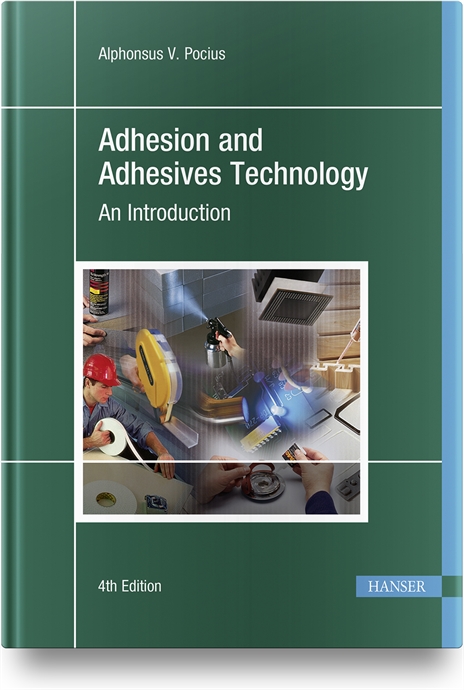ASSEMBLY magazine is celebrating its 50th anniversary this year. To mark the occasion, we are publishing a series of articles examining the past, present and future of various assembly technologies.
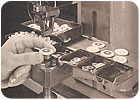
“We just received an order to supply equipment to rivet shielding on humvees,” says Charles A. Rupprecht, executive vice president of BalTec Corp. (Canonsburg, PA), a manufacturer of radial and orbital forming equipment. “It’s gratifying to be working on such an important application.”
From 1958 to 1978, the pages of ASSEMBLY were full of articles and advertisements about rivets and the equipment to install them. The first issue of ASSEMBLY carried ads on solid and semitubular rivets, blind rivets, drive-pin rivets and impact riveters. A brief report discussed how a pneumatic spin-riveting machine from Hill Machine Co. (Rockford, IL) could install turret terminals in a terminal board. Another described how engineers at what is now Lockheed Martin Corp. (Bethesda, MD) used punch cards and a “high-speed electronic computer” to control a 10-ton automatic riveter for assembling guided missiles.
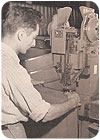
Making an Impact
An article published in the August 1961 edition of ASSEMBLY illustrates the capability of impact riveters 50 years ago. The article described assembly of subminiature multicontact switches at the now defunct Centralab Electronics Div. of Globe Union Inc. (Milwaukee). The company is notable as the place where Jack Kilby, inventor of the integrated circuit, got his start.Each switch consisted of one to four stator sections mounted on a shaft with accompanying rotors and silver-plated brass contact rings. Made of phenolic, the rotors and stators were approximately 1 inch in diameter and 0.125 inch thick. Tiny semitubular brass rivets, 0.14 inch long and 0.028 inch in diameter, were used to fasten the rings to the rotors and stators. Depending on the configuration, three to 12 rivets were needed for each stator section.
The stator sections were assembled on eight semiautomatic, single-head benchtop riveters, lined up in a row on four worktables. The fasteners were fed to the riveting head automatically, and power for the riveting stroke came from a flywheel. Despite the small size of the parts, an experienced operator could assemble an average of 100 switches per hour.
Although this application involved several single-head riveters staffed by multiple operators, manufacturers also grouped riveters in multihead arrangements or paired them with rotary indexing tables for some degree of automation. For example, the February 1963 edition of ASSEMBLY featured a report on a 12-station rotary indexing system for assembling automotive ventilator control dampers. The system was built by Milford Rivet & Machine Co. (Milford, CT), which is now owned by Orbitform (Jackson, MI). Three operators loaded two plates and a rubber seal into fixtures around the table. As each station indexed into position, an electrical switch was actuated and five pneumatic riveters simultaneously set rivets in the assembly. After riveting, the damper was automatically ejected at the next station. Completing a full rotation every 36 seconds, the system assembled 1,200 dampers per hour.
Today’s riveters aren’t all that much different from those of 50 years ago. Pneumatic, hydropneumatic and flywheel-driven impact riveters are still available in benchtop and pedestal-style models. Impact riveters are still being paired with rotary indexing tables to increase throughput.
What has changed in the past 50 years is how well riveting machines are integrated into semiautomatic and fully automatic assembly systems, says Jim Labold, sales manager for Chicago Rivet & Machine Co. (Naperville, IL), a supplier of both rivets and rivet-setting machines. The company, which was founded in 1920, advertised in the first issue of ASSEMBLY.
Today, observes Labold, an assembly requiring multiple rivets is much more likely to be produced on a multihead riveter paired with a high-speed, high-precision X-Y positioning table than a line of single-head riveters staffed by several operators. And, the task of loading parts onto fixtures is just as likely to be done by a small six-axis robot than a person.
Perhaps the biggest change in riveting technology is in how well engineers can monitor and control the riveting process. Proximity switches and vision systems ensure that the right parts have been loaded into the fixtures in the right way. Other sensors measure the height of a post or assembly prior to riveting; how much force the riveter applies to the parts; and how much material is displaced during the heading process. Variance from established limits for these variables indicate a defective part or assembly, and the machine can issue an alarm or send the assembly to a reject bin.
“Today’s riveting machine is error-proof,” says Labold. “It doesn’t let you put in defective parts or produce defective parts.”
Data from the riveting process can be collected and sent to a computer for analysis. If the riveter malfunctions, the problem can often be diagnosed-and even corrected-remotely via the Internet. If the heading tool is wearing down, the riveter can alert a maintenance technician via e-mail.
As for the rivets themselves, they haven’t changed at all, though they are now more likely to be produced overseas than domestically. “The cost of the materials has escalated quite a bit in the past couple of years,” says Fran Cyr, vice president and sales manager for National Rivet & Manufacturing Co. (Waupun, WI), which makes both rivets and impact riveters. “The price of copper has quadrupled [since 2002]. The price of Monel is astronomical.”
“Our business has taken us from the very simple rivet to the more complex component,” adds Labold. “We’ve gone from making mostly off-the-shelf products to mostly custom products.”
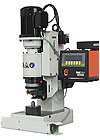
Orbital and Radial Forming
The development of radial and orbital forming machines followed a similar path as impact riveters. Like impact riveters, radial and orbital forming machines are increasingly part of automated assembly systems rather than stand-alone units.And, like impact riveters, today’s radial and orbital riveters are equipped with sensors and software for process control, says Rupprecht. Engineers can control forming time, force and distance, and they can assign tolerances to one or more of those variables. With such control, the riveter can automatically compensate for slight variations in the parts. This saves money by reducing scrap and enabling engineers to specify less costly parts. It’s also important for assembling pivoting joints.
“Riveters always used to come down to a fixed depth and if your parts varied-tough!” says Bruce McNoughton, president of Grant Riveters (Bridgeport, CT), whose company dates back to 1860. “Today, you can basically put junk parts into a riveter and viola! You get a pretty decent assembly.”
In early radial and orbital riveters, the forming force was generated by mechanical means. “Over time, the machinery changed,” says McNoughton. “It has gone from a very mechanical machine to a pneumatic, hydraulic or servo-electric machine.”
In addition, the mechanism for rotating the peen evolved from a belt-driven system to a direct-drive system. That development made the machines more durable and reduced maintenance requirements, says Rupprecht.

Blind Riveting
Blind rivets were invented during the late 1930s by engineers Carl Cherry and Louis C. Huck, who were looking for ways to speed up the production of airplanes. Today, blind rivets can be found “in everything from Porta-Johns to the space shuttle,” says Bruce Godfrey, chairman of Gage Bilt Products (Warren, MI).As with solid rivets, the basic design of blind rivets has changed little over the years. What has changed is the equipment for installing them. Early rivet-setting tools were air-powered and much larger and heavier than today’s tools. The introduction of hydropneumatic power cut the weight of the tool in half.
“Since then, we’ve gone one step further. We’ve designed a tool that splits the head assembly from the power cylinder,” says Godfrey. “A tool that once weighed 3 or 4 pounds now weighs only 1 pound.”
Automatic feeding mechanisms were another major development. And, like impact riveters and forming machines, today’s blind riveting tools can be set up to error-proof the process, collecting data on setting force, displacement and the number of rivets installed.
The next step, says Godfrey, is to equip six-axis robots with blind riveting tools to create a fully automated process. “An operator will only be needed to load the parts and keep the feeder bowl full of rivets,” he says. “This is already being done in the automotive industry, and it’s where a lot of American manufacturing has to go to reduce labor costs.”
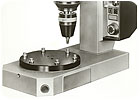
Looking Ahead
As for the future, riveting suppliers expect to be around for decades to come. “The beauty of being in such a diverse market is that when one industry segment is down, another is up,” says Cyr, whose company was founded in 1928. “The automotive industry has been struggling recently, but the aircraft industry is up. The white goods industry is not hitting on all cylinders, but the medical device market is pretty good. As technology changes, it opens up opportunities in one segment and closes them in others.”“Unless some new fastening technology emerges, I don’t see riveting technology being supplanted any time soon,” adds Rupprecht.
Labold predicts that the trend of increased automation will continue. “We have to get out of manual labor,” he says. “The future for riveting technology will be ‘lights-out manufacturing.’ We will rely completely on machines to provide product.”



